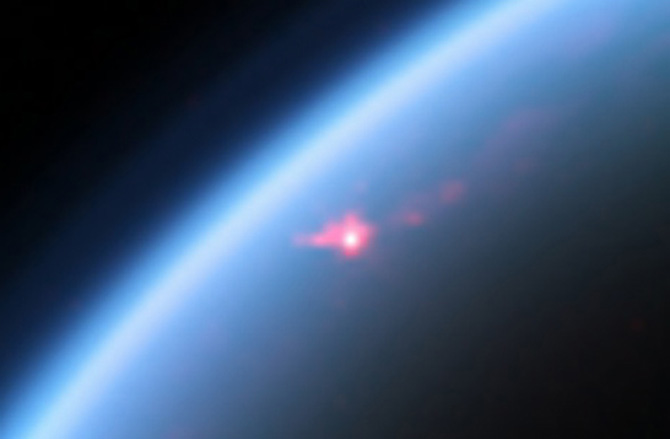Cassini Spies Wind-Rippled Waves on Titan

New observations from NASA’s Saturn-orbiting Cassini spacecraft show what appear to be glints of sunlight bouncing off a wind-rippled lake on the moon Titan.
"If correct, this discovery represents the first sea-surface waves known outside of Earth," University of Idaho planetary scientist Jason Barnes wrote in an abstract of a paper presented at the Lunar and Planetary Science Conference in Houston this week.
Big Pic: Cassini’s Stunning View of Titan’s Great Lakes
Comparisons with computer models indicate four measurements of Titan’s northern polar region made by Cassini’s Visual and Infrared Mapping Spectrometer on July 26 and Sept. 12, 2013, were wavy seas reflecting the sun.
"We cannot rule out mudflats covered in a liquid layer as the source of these slopes, our best-fit value indicates slopes of 6 degrees, plus or minus 1 degree," Barnes added.
"If the roughness is indeed due to waves, then the implied winds are (about) 0.76 meters per second (2.5 feet per second)," he wrote.
ANALYSIS: The ‘Tropical’ Lakes of Saturn’s Moon Titan
Get the Space.com Newsletter
Breaking space news, the latest updates on rocket launches, skywatching events and more!
Calculations show the waves would be about 2 cm in height, or about 0.8 inches.
The measurements were made in a region known as Punga Mare, one of several hydrocarbon seas that dot Titan’s north pole.
This story was provided by Discovery News.
Join our Space Forums to keep talking space on the latest missions, night sky and more! And if you have a news tip, correction or comment, let us know at: community@space.com.

Irene Klotz is a founding member and long-time contributor to Space.com. She concurrently spent 25 years as a wire service reporter and freelance writer, specializing in space exploration, planetary science, astronomy and the search for life beyond Earth. A graduate of Northwestern University, Irene currently serves as Space Editor for Aviation Week & Space Technology.









